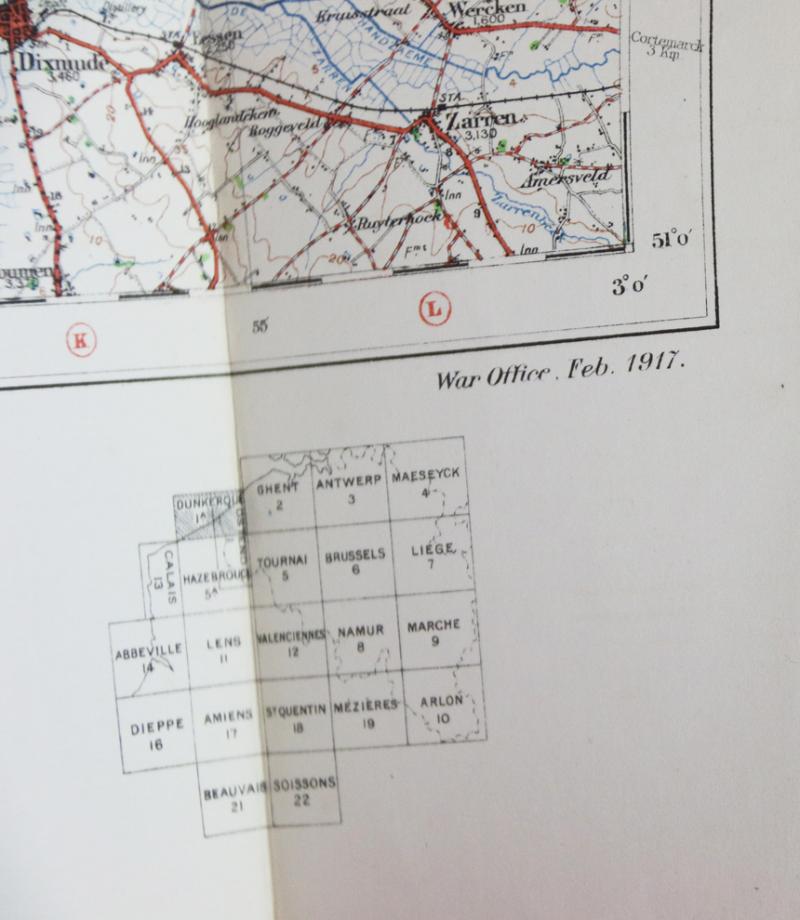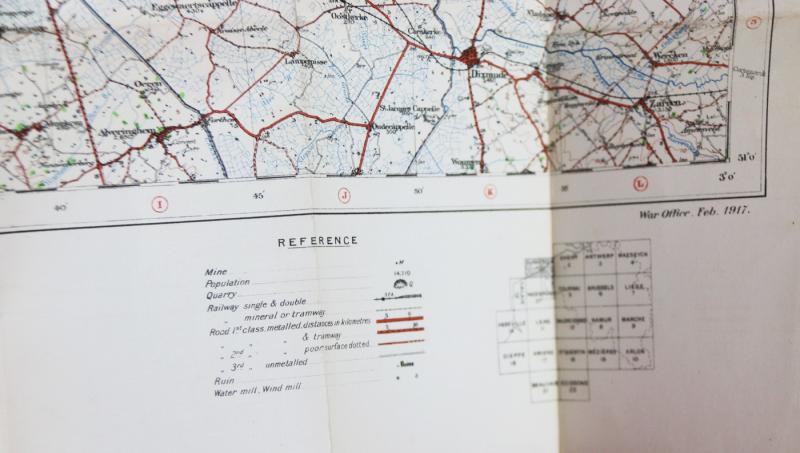Interesting Dunkirk, Rear Guard Evacuation, & Africa Campaign, 1st Battalion, The Dukes, An Officer Group Of Four Medals of the Duke of Wellington's Regiment (West Riding) With Dunkirk Evacuation War Dept. Issue Map
Officer Group, of the 33rd Regiment, the Duke of Wellingtons, aka 'the Dukes' of the Ist Battalion. Group of four, the War Medal, Defence Medal, Africa Star, 1939-45 Star. Dunkirk Evacuation Map, Official War Office Issue 1917, backed on linen. Showing the beaches of Dunkirk, from Ostend to Dunkirk and Port Philipe. From an officer that was part of the rear guard action of the 33rd, during the Dunkirk evacuation. Part of the valiant and bravest men defending the evacuation of around 198,000 British and 140,000 French and Belgian troops. The crimes began as Dunkirk was being evacuated. On May 28, the SS Totenkopf Division marched about 100 members of the 2nd Battalion of the Royal Norfolk Regiment, which had just surrendered, to a pit in a farm in Le Paradis and murdered them with machine gun spray. A similar
atrocity unfolded on the
same day with the 2nd
Battalion of the Royal
Warwickshire Regiment,
which had been captured
near Wormhout. They were forced into a barn and massacred with grenades.
One must not forget the tremendous sacrifice of the 51st Highlanders of the BEF, who continued to fight the German Panzers over 100 miles from Dunkirk, became trapped and around 10,000 men were captured on the 12th June 1940, and although not part of the evacuation, without them combating and engaging so many of the German Wehrmacht, the Dunkirk evacuation may not have been even possible.
The 'Dukes' later fought in the North African Campaign, fighting with distinction in a number of actions and gaining several Battle Honours, as part of the 3rd Infantry Brigade, for which the veteran gained the Africa Campaign Star. They fought at the Battle of Medjez Plain and the Battle of Banana Ridge and in the Battle of Djebel bou Aoukaz. The Bou was a ridge dominating the Medjez el Bab to Tunis road
The Second World War was declared on 3 September 1939, and the 1st Battalion, commanded by Lieutenant Colonel Edmund Charles Beard, was immediately sent to France as part of the 3rd Infantry Brigade of the 1st Infantry Division of 1st Corps of the BEF. During the retreat to Dunkirk, the 'Dukes' formed part of the rearguard.
The Dunkirk evacuation, code named Operation Dynamo and also known as the Miracle of Dunkirk, or just Dunkirk, was the evacuation of more than 338,000 Allied soldiers during the Second World War from the beaches and harbour of Dunkirk, in the north of France, between 26 May and 4 June 1940. The operation commenced after large numbers of Belgian, British, and French troops were cut off and surrounded by German troops during the six-week Battle of France. In a speech to the House of Commons, British Prime Minister Winston Churchill called this "a colossal military disaster", saying "the whole root and core and brain of the British Army" had been stranded at Dunkirk and seemed about to perish or be captured. In his "We shall fight on the beaches" speech on 4 June, he hailed their rescue as a "miracle of deliverance. When it ended on June 4, about 198,000 British and 140,000 French and Belgian troops had been saved, also about 1,200 Dutch army personnel who refused to surrender wandered through northern France until they could get on ships bound for England from Caen and Brest. However, the French government ordered the evacuated French military personnel to return to France, which they did, the same way as they were saved, by ship, in around 10 days or so, but around 3000 refused to return, and later formed the Free French Army under General De Gaulle.
The 'Dukes' then later fought in the North African Campaign, fighting with distinction in a number of actions and gaining several Battle Honours, as part of the 3rd Infantry Brigade. They fought at the Battle of Medjez Plain and the Battle of Banana Ridge and in the Battle of Djebel bou Aoukaz. The Bou was a ridge dominating the Medjez el Bab to Tunis road.
The 'Dukes' also fought in the Italian Campaign, but this officer was wounded and did not see action in Italy. They took part in the Anzio Campaign, in an attempt to outflank the Gustav Line and force a German retreat from Monte Cassino. We do not know at present the officer's name, but research could be successful in that respect. Capt Sir Tom Moore also served in the 33rd, Regiment, in the 2nd Btn
Code: 24520










